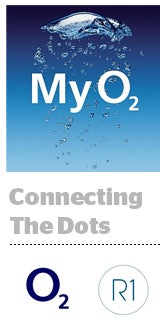 Prospecting is one of the biggest challenges facing British carrier O2, especially in apps.
Prospecting is one of the biggest challenges facing British carrier O2, especially in apps.
“Pretty much every app acts as its own ecosystem – they’re cookieless environments, so actually being able to track someone using traditional methods is nigh impossible,” said Dan Michelson, innovation and capability lead at the Telefónica-owned telecom.
O2 is concerned with two main issues: finding new customers and encouraging existing users to engage with its apps, including account management app MyO2 and rewards app Priority O2.
“How do we identify new customers versus existing customers,” Michelson said. “The way we want to communicate with consumers who are already engaged with O2 is very different than with someone who hasn’t yet.”
That’s why O2 takes a keen interest in tracking downloads, engagement and post-install activity in its own apps, as well as in the third-party apps here it advertises.
To that end, the carrier has been taking advantage of a tool from ad tech company RadiumOne that combines mobile analytics from software development kit (SDK) providers into a single web-based dashboard.
“Connect,” as it’s called, helps marketers gather in-app engagement data to support their programmatic cross-device media campaigns. Although it’s also available as a standalone solution, the tool is integrated directly into RadiumOne’s demand-side and data management platforms, which means clients can use their segments across RadiumOne’s exchange partners, including MoPub, Google AdX, Rubicon and Pubmatic.
“Consumers are spending most of their digital lives on smartphones, and the majority of that time is spent in apps,” said Bob Hall, SVP of business development at RadiumOne. “So capturing those interactions should be the foundation for the audience intelligence you use for all of your other marketing activities, like user acquisition and reengagement.”
But the expectation isn’t to replace its clients’ existing SDK relationships, Hall said, at least not straightaway. It’s no easy feat getting developers to switch away from SDKs they’re already comfortable with.
“On a feature-by-feature basis, we don’t think people are going to rip out their push provider or their install tracking platform,” Hall said. “Our foot in the door comes from, ‘Hey, your analytics data shouldn’t be stranded in silos, it should be used for things like marketing and reengagement.”
In O2’s case, the carrier is using Connect to build what Michelson called “deeper profiles and lookalike modeling around certain users who are more likely to do certain things,” which has been useful when it comes to reducing unnecessary spend.
“We have millions of people using some of our apps, so just being able to exclude regular app users from our marketing campaign allows us to cut quite a lot of wastage from the very beginning,” Michaelson said. “And from an app-tracking point of view, we’re seeing the benefit of tying everything up under one platform for a deeper understanding of how consumers are engaging with our marketing activity and what led them to start downloading our apps.”
It’s also about figuring out what makes an existing customer tick and tailoring the messaging accordingly. MyO2, a utility app that allows users to check their data allowance, pay bills, top up their minutes and the like, can appeal to two very different types of people – highly cost-conscious consumers and those who want to quickly check their usage stats.
“Even by tailoring communications to just those two audiences we’re finding that our performance is much better,” Michaelson said, referring to both initial download and reengagement campaigns.
The plan down the line is for O2 to start taking better advantage of its first-party data to experiment with personalized video and more timely data-fueled display campaigns.
“The big thing for us is buying the right audience using our own data and lookalike data to be as efficient as possible, not just buying a single content placement and hoping it’s where our consumers are,” Michaelson said. “For us, programmatic is pretty much becoming the cornerstone of our marketing activity.”
(Addendum: When asked about O2’s plans around ad blocking – it was first reported in late November that the carrier was exploring network wide ad-blocking options – Michaelson deflected: “Everyone’s been asking me about that,” he said. “But I really can’t comment. It’s not my remit or my role.”)













